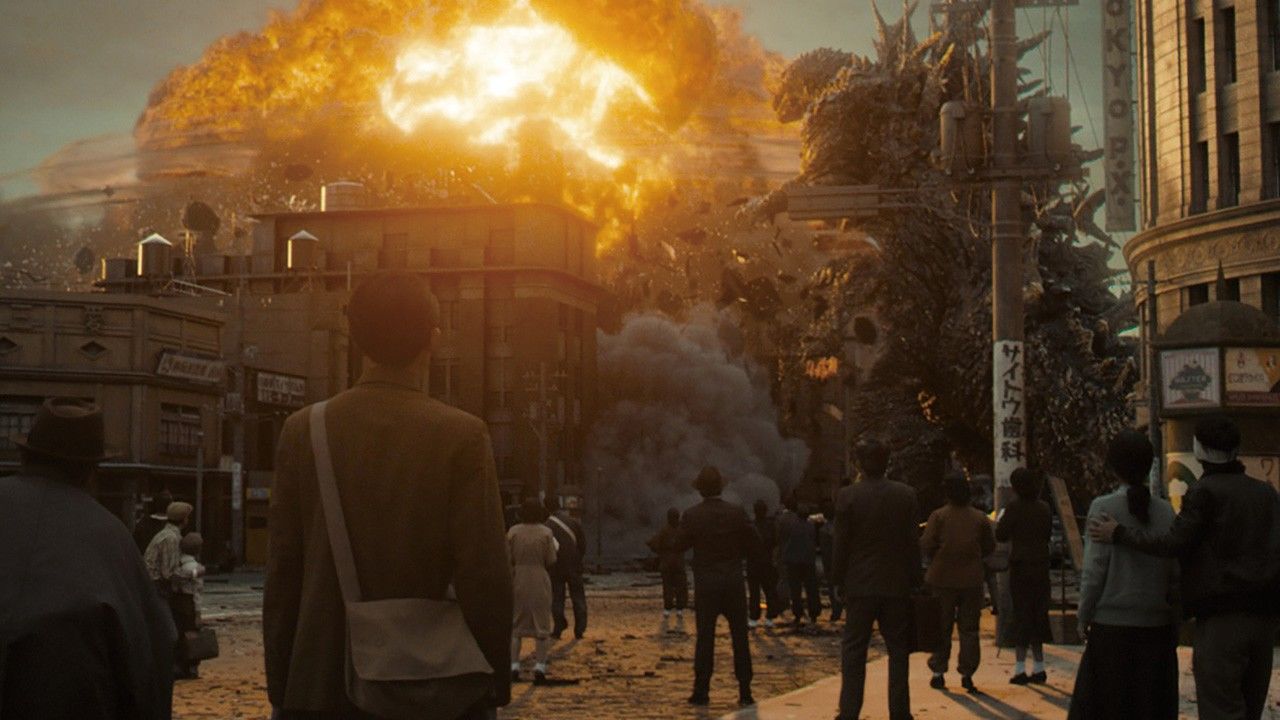
“Godzilla Minus One”: Exceeding Expectations with Efficient Effects
Culture Entertainment Society- English
- 日本語
- 简体字
- 繁體字
- Français
- Español
- العربية
- Русский
During an interview about his work on the live action film adaptation of hit manga Parasyte nearly 10 years ago, director Yamazaki Takashi offered a reserved assessment of Japan’s film industry in the international marketplace, stating that he was not much interested in appealing to viewers overseas, as it was impossible to compete with Hollywood.
Yamazaki may have been too modest. After Godzilla Minus One hit screens in the United States in December 2023, it went on to become the biggest earning live-action Japanese movie in history and has made over $100 million worldwide. Yamazaki also became only the second director to win the Academy Award for Best Visual Effects since Stanley Kubrick’s 1969 win for 2001: A Space Odyssey.
Maximizing Effects on a Minimized Budget
What do the experts think of the visual effects in Godzilla Minus One?
“The scene where Godzilla destroys Ginza and Yūrakuchō had maximum impact, heightened by the heavy bass sound,” says Tamura Hideyuki, a VFX critic and former professor at Ritsumeikan University. “The expressions of the panicked crowds running from Godzilla’s massive feet also seemed authentic. Japan’s VFX lag far behind Hollywood’s, but the efforts of Yamazaki and the visual effects company Shirogumi lifted them to a level where you could no longer sense that difference.”
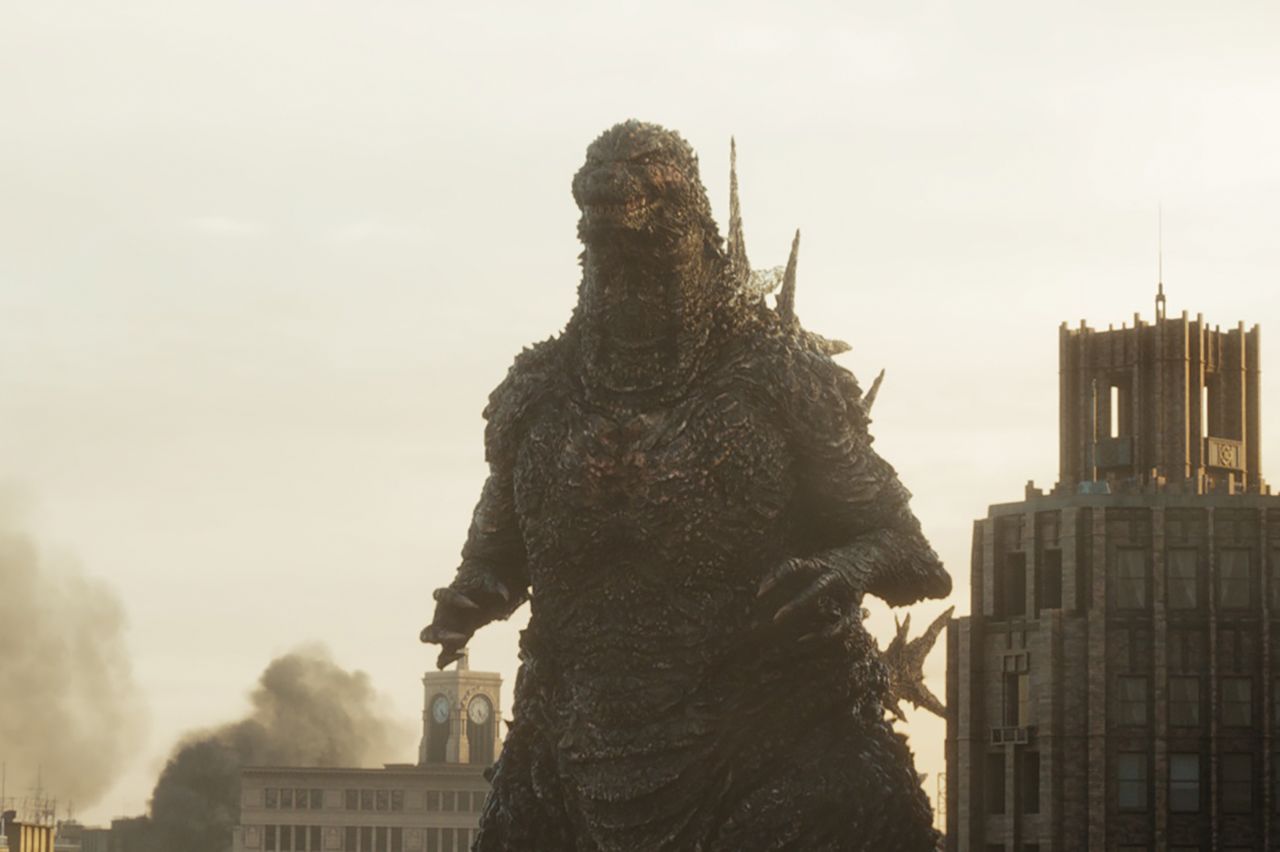
Godzilla towers over Tokyo’s buildings. (© 2023 Toho Co., Ltd.)
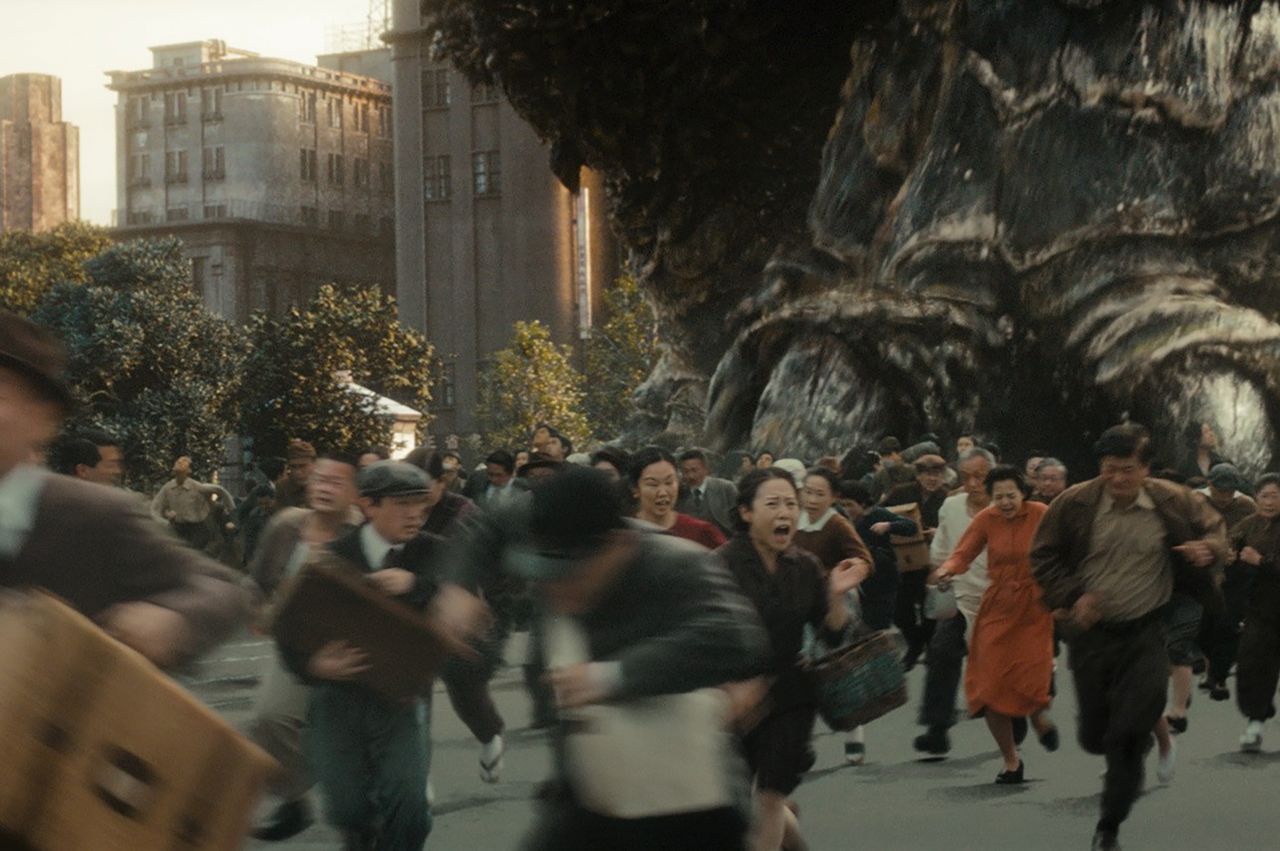
Tokyoites flee in terror from the trampling kaijū. (© 2023 Toho Co., Ltd.)
Godzilla Minus One’s production cost was reportedly around ¥100–150 million, or less than a tenth of a major Hollywood film, so its low budget became another talking point. The filmmakers created an impressive display, working within that limitation by combining analog techniques, such as rocking fighter planes and boats by hand, with digital effects.
A select team of 35 works on Shirogumi’s digital effects in one large open space in the company’s Tokyo office; this is a much smaller group than any Hollywood equivalent. Yamazaki’s presence as he provides direct guidance and thinks things through together with them is another way to save time and money. Young VFX artist Nojima Tatsuji, who drew attention for his simulations of water mist and waves when Godzilla rises from the ocean, says this kind of contact with the director helped raise the quality of his work.
“Increasing budgets is not the only way to improve work,” Tamura points out. “Director Yamazaki excels in his skillful use of limited resources to create a delicate balance of drama and VFX.”
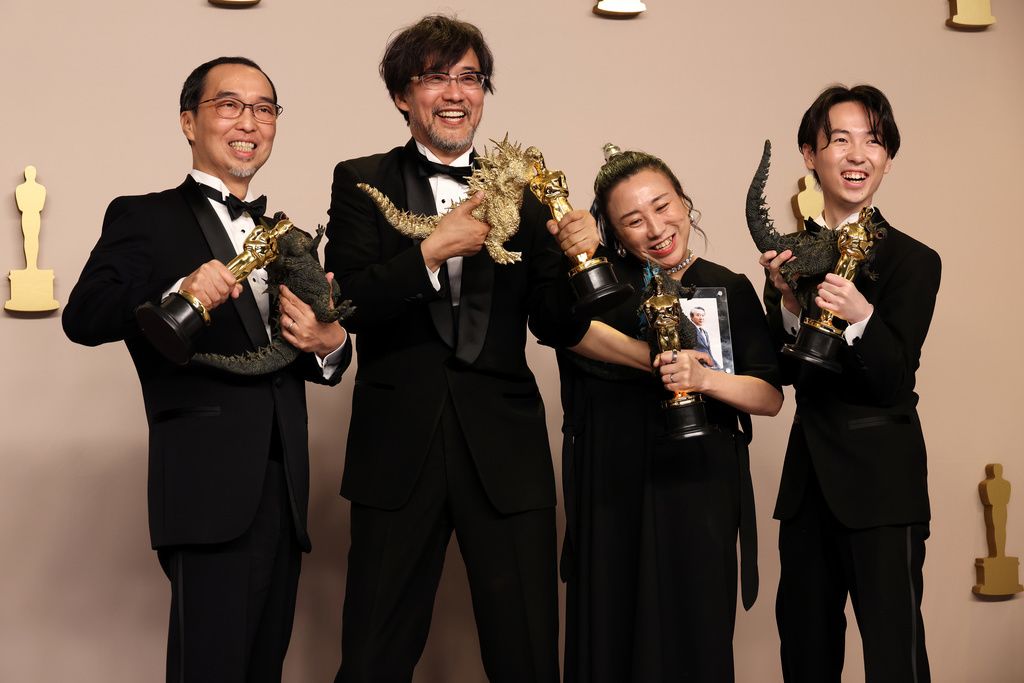
The Shirogumi team after receiving their Oscar. From left: Takahashi Masaki (3DCG director), Yamazaki Takashi, Shibuya Kiyoko (VFX director), Nojima Tatsuji (effects artist/compositor). Taken March 2024 in Los Angeles. (© WireImage/Getty Images/Kyodo)
In Hollywood, there are signs that audiences are growing tired of big VFX spectacles, as seen from the box office slump for Marvel Studio’s Avengers series.
“In the context, the focus on drama rather than leaning on VFX to sell the movie likely earned it respect. It did well at depicting the personal story of a found family and its members. Tōhō also got started early in promoting it in North America, which likely helped it win the award,” reflects Tamura.
Shin Godzilla and Japanese Special Effects
The first Godzilla films used the tokusatsu effects of Tsuburaya Eiji, based around actors in suits on miniature sets. “Tsuburaya’s tokusatsu films emerged from a system centered on harsh physical labor and apprenticeship. They aimed at authenticity” explains Kuno Tsutomu, professor at Bunkyō Gakuin University, who has direct experience as a producer at film company Tsuburaya Productions.
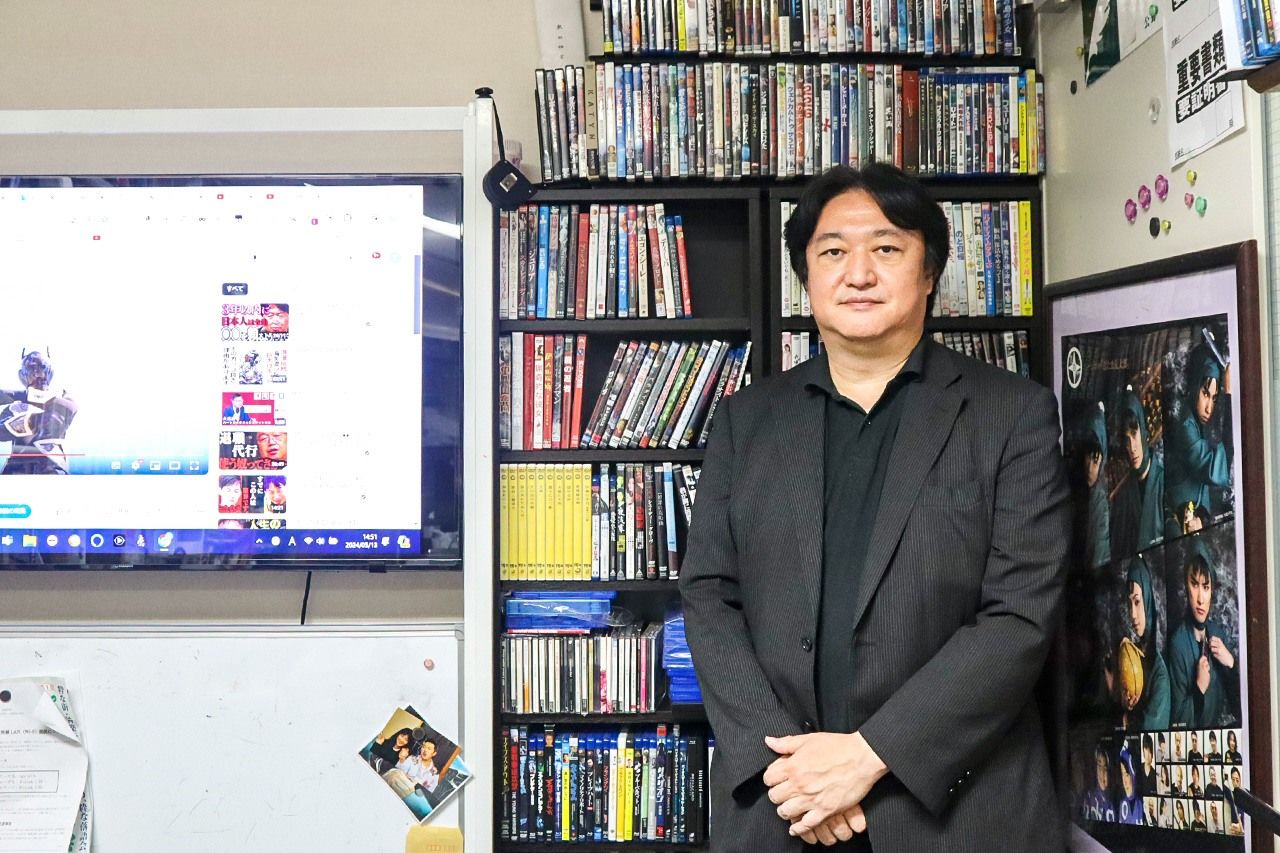
Professor Kuno Tsutomu teaches everything from tokusatsu filming techniques to distribution. (© Nippon.com)
“I think that there’s a view that, since CGI makes anything possible, on-set trial and error is a waste of time. But the true charm of tokusatsu comes in its authenticity, by incorporating unpredictability in the form of unforeseen incidents on the set.”
While the 2016 film Shin Godzilla used CGI, it also paid tribute to tokusatsu by including miniature filming techniques and real explosions. In the end, the kaijū Godzilla was fully CGI, but the original plan was to mix the use of a monster suit with computer effects.
“Godzilla Minus One uses a full-sized model of the Shinden (a prototype fighter plane), as well as miniatures in some scenes, effectively integrating them with CGI. Yamazaki was not focused on the question of whether to use tokusatu or CGI, but on finding creative ways to bring power to the film and engage the audience.”
A Sense of Balance
Yamazaki was inspired to follow his own unique filmmaking path after watching Close Encounters of the Third Kind and Star Wars—both released in Japan in 1978—in junior high school. He joined Shirogumi in 1986 and was put in charge of miniatures at the Chōfu office, which handled miniature production, CGI, filming, and composition. His true goal at the time was not Japanese tokusatsu, but Hollywood-style visual effects.
“Yamazaki is from the generation that grew up watching Steven Spielberg and George Lucas movies. Young, unknown directors were getting investment from studios on the basis of their ideas alone, creating new techniques, and making work that entertained audiences around the world. That is the source of his fascination with VFX films,” says Kuno.
While he continued working on television commercials, he was also put in charge of digital composites for films like The Last Dance (1993) and A Quiet Life (1995) directed by Itami Jūzo (best-known for his 1985 film Tampopo). His directorial debut came in 2000, with the SF/fantasy film Juvenile, about a group of young boys meeting an alien during summer break. It came after problems funding his initial idea, a grand SF adventure called Nue, led him to return with a lower budget idea. He found popular success with his third film, the 2005 drama Always Sunset on Third Street, which recreated the feel of 1950s Tokyo.
Kuno published a collection of interviews with Shirogumi staff, including Yamazaki, in 2016.
“Yamazaki told me then that when he was working on Itami’s movies, he filmed test pieces over and over to hone his craft. Itami was not the type to compromise, and Yamazaki said that he wanted to be just as uncompromising, but never managed it.”
Itami founded his own production company that fully financed his films. These included some considered failures in the industry. Kuno explains that in Yamazaki’s case, if he is too meticulous on the set, it could drive up production costs. Then, if the work is not a hit, the film company could take a loss. It seems, instead, that he has tried to maintain a balance, considering whether a particular issue is just a question of his personal taste or if dealing with it would serve the audience. He makes whatever budget cuts he can and tries to deliver work that exceeds expectations.
“Even with Itami’s influence, it seems he has found his own method; a way to deliver hits by working together and being attentive to the needs of different sides, like the production companies or Shirogumi staff,” Kuno says.
“I’m sure that Tōhō had all kinds of demands on the set, but Yamazaki accepted them all as reasonable, including the budget and script, and made the absolute best cinematic expression. He’s a director with an excellent sense of balance. In his flexibility and rare ability to handle a major production, he’s a valuable asset for film companies.”
Raising the “Next Yamazaki”
Kuno says that new creators in the “Yamazaki style” are coming through. These are directors who “have excellent consensus building ability and sense of balance, in that they are able to skillfully meet the needs of investors (film companies and sponsors), while still letting their own creativity shine.
“Director Taguchi Kiyotaka of the Ultraman Blazar TV series is one example. The Ultraman series is loaded with business conditions because of the related toy merchandising. And since it’s aimed at children, there are also lots of regulations on what can be shown. But even with all those limitations, I think he’s the type who can still make a fun show.”
At the same time, he says that there are few young people seeking to make films with the same passion as the young Yamazaki.
“There are lots of people who like to watch effects-heavy movies, but never want to make them. A film production team needs from 50 or 60 people up to 300. Individuals can’t put their own interests first, and there’s a trend of people thinking it’s too much effort to keep in communication while they work. I hope that the success of Yamazaki’s team can serve as an inspiration to drive the younger generation.”
The Future for Yamazaki and Godzilla
“Although Godzilla Minus One was a hit in the United States, this spring’s US production Godzilla x Kong: The New Empire earned much more,” VFX critic Tamura points out. “From the start, there was a huge difference in opening theater numbers and advertising budget.”
News recently emerged that Yamazaki has signed with major American talent agency, Creative Artists Agency. While he might now start making movies stateside, Tamura says that there is little chance he will break ties with Shirogumi completely.
“I’ve been a follower of Yamazaki’s work since Juvenile, and have interviewed him several times. I get the feeling that he wants his film work to help raise Shirogumi’s technical capabilities. If Yamazaki spreads his wings on the global stage, I think he’ll have a better chance at success through global streaming services like Netflix, Amazon Prime, or Apple TV than working on big Hollywood films. And if he does that, you can be sure Shirogumi will be involved.”
Yamazaki once said that he wanted to build his own world for a fantasy, as Miyazaki Hayao did in Nausicaä of the Valley of the Wind. The director’s fans would surely like to see this kind of large-scale production one day, but the more pressing matter is who will helm the follow-up to Godzilla Minus One.
“I think Yamazaki will make the next film,” Tamura says. “And if he does, the setting will be a few years after 1947, when Minus One ends, but before 1954, when the original Godzilla was released. Yamazaki’s Godzilla grew to a massive size as a result of the United States’ 1946 nuclear testing. That was the atomic bomb. The original Godzilla was made huge by the first hydrogen bomb tests in March 1954. How will they resurrect Godzilla? Will they link to the original story? Will there be other kaijū? What will the title be? It’s fascinating to think about.”
(Originally written by Kimie Itakura of Nippon.com and published in Japanese on June 12, 2024. Banner photo: Godzilla wreaks destruction on Tokyo. © 2023 Toho Co., Ltd.)
